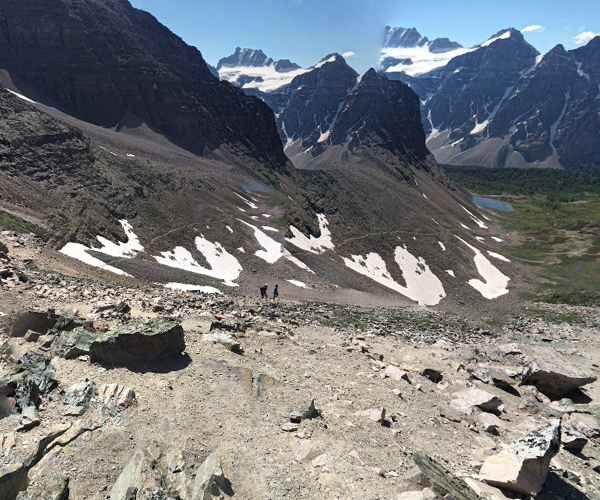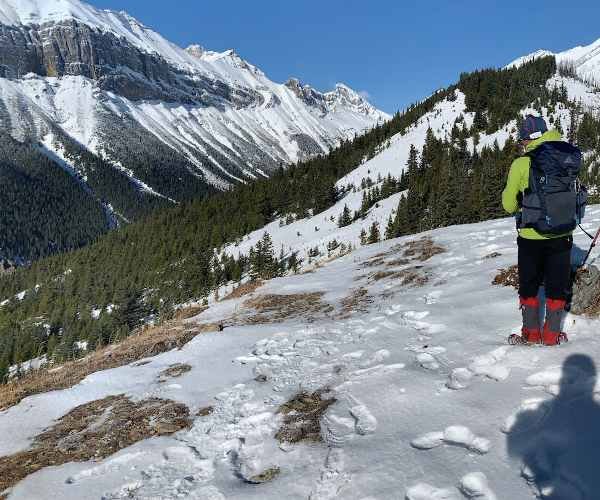Banff National Park, nestled in the heart of the Canadian Rockies, is a haven for seasoned hikers seeking demanding trails with breathtaking rewards. Challenging hikes in Banff for experienced trekkers offer steep ascents, technical scrambles, and jaw-dropping vistas of turquoise lakes, rugged peaks, and sprawling glaciers. From the iconic Sentinel Pass to the lesser-known Aylmer Lookout, this guide lists the top strenuous trails, complete with detailed tables, safety tips, and insider advice to help you conquer Banff’s toughest routes. Whether you’re chasing panoramic summit views or remote alpine solitude, these hikes demand fitness, preparation, and respect for the wild.
With over 1,600 km of trails, Banff caters to adventurers who thrive on elevation gains and rugged terrain. This article dives into the best difficult hikes, organized by region, with practical details like distance, elevation gain, and estimated time. Expect unique lists, comparison tables, and actionable tips to ensure a safe and memorable trek. Let’s explore the trails that make Banff a bucket-list destination for expert hikers.
Why Choose Challenging Hikes in Banff?
Banff’s rugged landscape, shaped by millions of years of geological forces, creates a playground for experienced trekkers. The park’s high-altitude passes, scree slopes, and technical routes test physical endurance and mental grit. Moreover, the reward—unparalleled views of snow-capped peaks and vibrant alpine meadows—makes every step worthwhile. For example, summiting a peak like Mount Bourgeau offers 360-degree panoramas that few other places can match. However, these trails require preparation, including proper gear, bear awareness, and route-finding skills.
Before diving into the trails, consider visiting the Banff Visitor Centre for maps and trail updates. Also, check out Banff September Weather: What to Expect for insights on ideal hiking conditions, especially during the larch season.
Top Challenging Hikes in Banff: Detailed List
Below, we’ve curated a list of the most demanding hikes in Banff, tailored for experienced trekkers. Each entry includes key details to help you plan effectively.
1. Sentinel Pass via Larch Valley

- Location: Moraine Lake Area
- Distance: 11.6 km round trip
- Elevation Gain: 792 m
- Estimated Time: 6–8 hours
- Difficulty: Hard
- Highlights: Stunning views of the Valley of the Ten Peaks, golden larch trees in fall, and a steep climb to a high alpine pass.
Sentinel Pass is a bucket-list trek that starts at the iconic Moraine Lake. The trail ascends through Larch Valley, where golden larches steal the show in late September. The final push to the pass involves switchbacks and loose scree, demanding strong legs and balance. At the summit, you’re greeted with views of Mount Temple and Paradise Valley. Note that Parks Canada requires groups of four or more during peak seasons due to grizzly activity.
Tip: Arrive early to secure parking or use the shuttle from Lake Louise Ski Area. Carry bear spray and check trail restrictions.
2. Mount Bourgeau

- Location: Banff Town Area
- Distance: 22 km round trip
- Elevation Gain: 1,700 m
- Estimated Time: 8–10 hours
- Difficulty: Very Hard
- Highlights: Bourgeau Lake, Harvey Pass, and expansive summit views.
Mount Bourgeau is a beast of a hike, perfect for trekkers craving a long, non-technical summit. The trail passes Bourgeau Lake and Harvey Pass before a grueling climb to the 2,931 m peak. The payoff? Sweeping views of Banff National Park’s peaks and valleys. This hike requires stamina, as the elevation gain is relentless.
Tip: Start early to avoid afternoon weather changes. Pack layers for the exposed summit.
3. Cory and Edith Pass Loop

- Location: Banff Town Area
- Distance: 13 km loop
- Elevation Gain: 1,015 m
- Estimated Time: 6–8 hours
- Difficulty: Hard
- Highlights: Dramatic views of Mount Louis, technical scrambling sections.
This loop is a favorite among locals for its challenging terrain and solitude. The Cory Pass ascent is steep, with rocky scrambles that test your agility. Descending via Edith Pass offers a gentler return through forested trails. The highlight is the unobstructed view of Mount Louis, a jagged limestone peak.
Tip: Ascend Cory Pass first for better traction on the scree. Wear sturdy boots for scrambling.
4. Aylmer Lookout

- Location: Lake Minnewanka Area
- Distance: 23.6 km round trip
- Elevation Gain: 850 m
- Estimated Time: 8–10 hours
- Difficulty: Hard
- Highlights: Panoramic views of Lake Minnewanka, minimal crowds.
Aylmer Lookout is a hidden gem for those willing to tackle its length. Starting at Lake Minnewanka, the trail follows the shoreline for 7.8 km before a steep 4 km climb to the lookout. The reward is a 500 m-high vantage point over the largest lake in Banff, with countless peaks in the distance. Grizzly bear activity is common, so hike in groups of four and carry bear spray.
Tip: Check trail reports for bear closures. Bring plenty of water, as the trail lacks sources.
5. Cirque Peak

- Location: Icefields Parkway
- Distance: 16.8 km round trip
- Elevation Gain: 1,050 m
- Estimated Time: 7–9 hours
- Difficulty: Very Hard
- Highlights: 360-degree summit views, Helen Lake, scree scrambling.
Cirque Peak, just off the Icefields Parkway, is a serious challenge with a steep scree field near the summit. The trail passes Helen Lake, a stunning alpine gem, before the relentless climb begins. The final quarter-mile involves scrambling, so it’s not for those afraid of heights. From the 2,993 m summit, you’ll see snow-capped peaks and vibrant meadows.
Tip: Use trekking poles for the scree descent. Avoid this hike in wet conditions.
Comparison Table of Challenging Hikes
| Hike Name | Distance (km) | Elevation Gain (m) | Estimated Time (hrs) | Difficulty | Key Feature |
|---|---|---|---|---|---|
| Sentinel Pass | 11.6 | 792 | 6–8 | Hard | Valley of the Ten Peaks |
| Mount Bourgeau | 22 | 1,700 | 8–10 | Very Hard | Harvey Pass and summit views |
| Cory and Edith Pass | 13 | 1,015 | 6–8 | Hard | Mount Louis vista |
| Aylmer Lookout | 23.6 | 850 | 8–10 | Hard | Lake Minnewanka panorama |
| Cirque Peak | 16.8 | 1,050 | 7–9 | Very Hard | Helen Lake and scree scramble |
This table helps trekkers compare hikes based on distance, elevation, and time, ensuring you pick the right challenge for your skill level.
Essential Gear for Strenuous Banff Hikes
Proper equipment is non-negotiable for Banff’s tough trails. Here’s a detailed list to keep you safe and comfortable:
- Footwear: High-ankle hiking boots with strong grip for rocky terrain.
- Navigation: GPS device or AllTrails+ for offline maps.
- Safety: Bear spray, accessible and ready to use. Learn how at Parks Canada.
- Clothing: Moisture-wicking layers, waterproof jacket, and warm hat for unpredictable weather.
- Hydration: Water filter or 3L water reservoir, as sources are scarce on long hikes.
- Trekking Poles: Essential for scree and steep descents.
- First Aid Kit: Include blister treatment and emergency supplies.
Personal Anecdote: On my first attempt at Cory Pass, I underestimated the scree and slipped multiple times. Trekking poles saved the day, and I’ve never hiked without them since.
Safety Tips for Experienced Trekkers
Banff’s wilderness is stunning but unforgiving. Follow these safety guidelines:
- Check Trail Conditions: Visit Parks Canada for updates on closures and avalanche risks.
- Hike in Groups: Some trails, like Aylmer Lookout, require groups of four due to bears.
- Know Your Limits: Don’t attempt scrambles like Cirque Peak without experience.
- Carry Bear Spray: Practice using it before your hike.
- Plan for Weather: September is ideal, but storms can hit suddenly. Check Banff September Weather for insights.
Tip: Always tell someone your hiking plan and expected return time.
Regional Breakdown of Difficult Hikes
Banff’s trails are spread across distinct areas, each with unique challenges. Here’s a breakdown:
Moraine Lake Area
- Key Hike: Sentinel Pass
- Why It’s Tough: Steep switchbacks and high elevation.
- Best For: Photographers and larch enthusiasts.
Banff Town Area
- Key Hikes: Mount Bourgeau, Cory and Edith Pass
- Why It’s Tough: Long distances and significant elevation gains.
- Best For: Summit chasers and scramblers.
Lake Minnewanka Area
- Key Hike: Aylmer Lookout
- Why It’s Tough: Lengthy approach and bear activity.
- Best For: Solitude seekers.
Icefields Parkway
- Key Hike: Cirque Peak
- Why It’s Tough: Scree scrambling and exposed summit.
- Best For: Adventurers with scrambling experience.
Additional Strenuous Trails to Explore
For trekkers hungry for more, here are three bonus hikes:
- Cascade Amphitheatre
- Rockbound Lake
- Helen Lake and Dolomite Pass
Planning Your Banff Hiking Adventure
To make the most of your trek, consider these logistical tips:
- Transportation: Use shuttles or public transit to reach trailheads, as parking fills early. Learn more at How to Get to Banff: Best Routes from Major Cities.
- Permits: Some backcountry hikes require permits. Check Parks Canada for details.
- Accommodation: Stay near trailheads in Banff or Lake Louise for early starts. The Royal Canadian Lodge offers a great base with a relaxing pool for post-hike recovery.
- Timing: Late summer to early fall (July–September) is ideal for clear trails and vibrant scenery.
Personal Anecdote: After tackling Sentinel Pass, I soaked my sore muscles at the Banff Upper Hot Springs. It was the perfect way to unwind. Check out Banff Upper Hot Springs Rules, Safety Tips, and Best Practices for a visit.
Why These Hikes Are Worth the Effort
Challenging hikes in Banff reward trekkers with more than just views. They offer a chance to push your limits, connect with nature, and experience the raw beauty of the Rockies. Whether you’re standing atop Cirque Peak or gazing at Lake Minnewanka from Aylmer Lookout, the sense of accomplishment is unmatched. Plus, the solitude of these trails—far from the tourist crowds—feels like a rare gift in a park that sees over 4 million visitors annually.
Final Thoughts
Banff National Park’s toughest hikes are a call to adventure for experienced trekkers. From the scree-laden slopes of Cirque Peak to the larch-lined paths of Sentinel Pass, these trails demand preparation but deliver unforgettable rewards. Use the lists and tables above to plan your route, pack wisely, and stay safe. For more Banff inspiration, explore What Is Banff Famous For? to round out your trip.
Ready to lace up your boots? Banff’s peaks are waiting.

